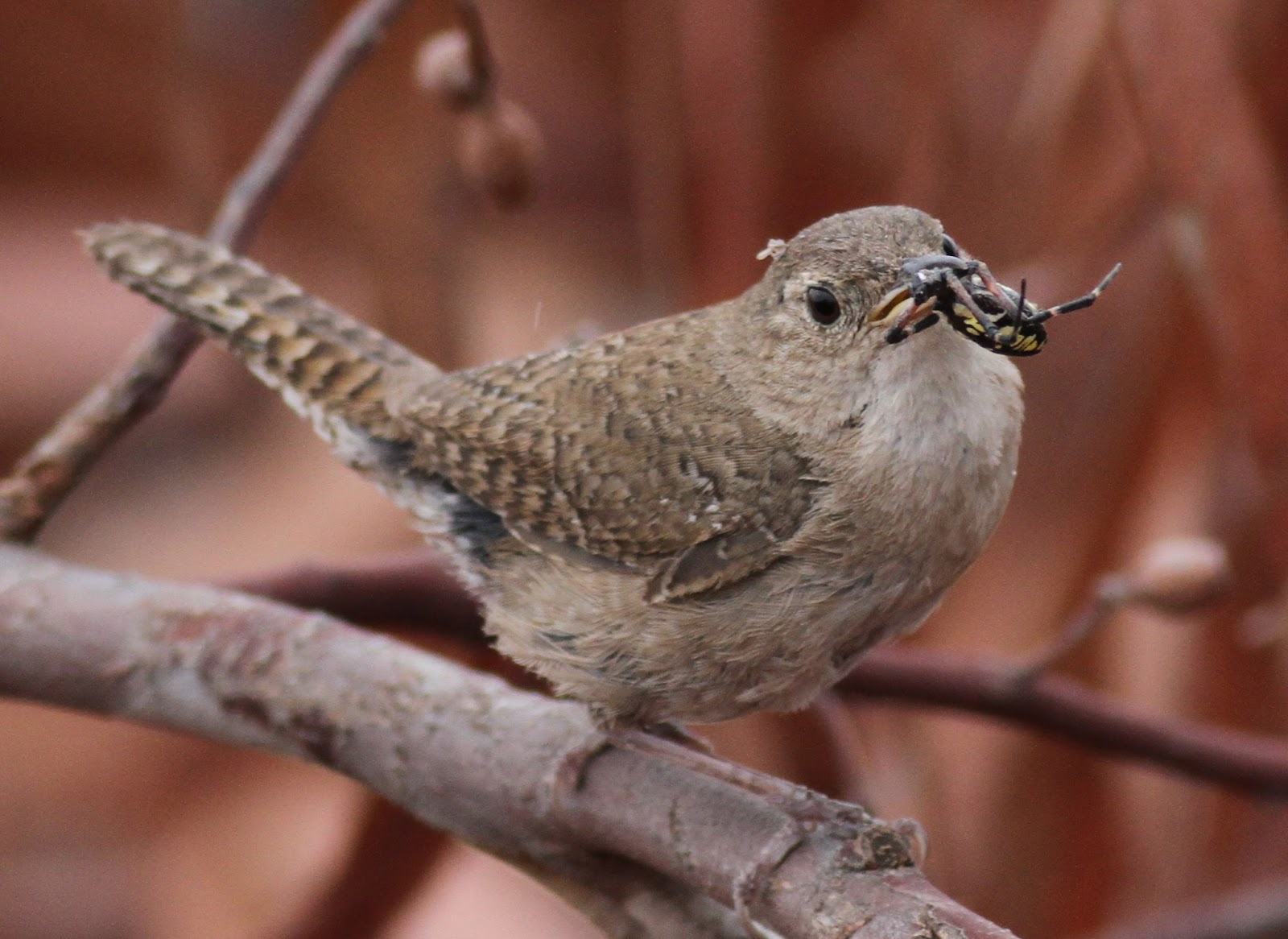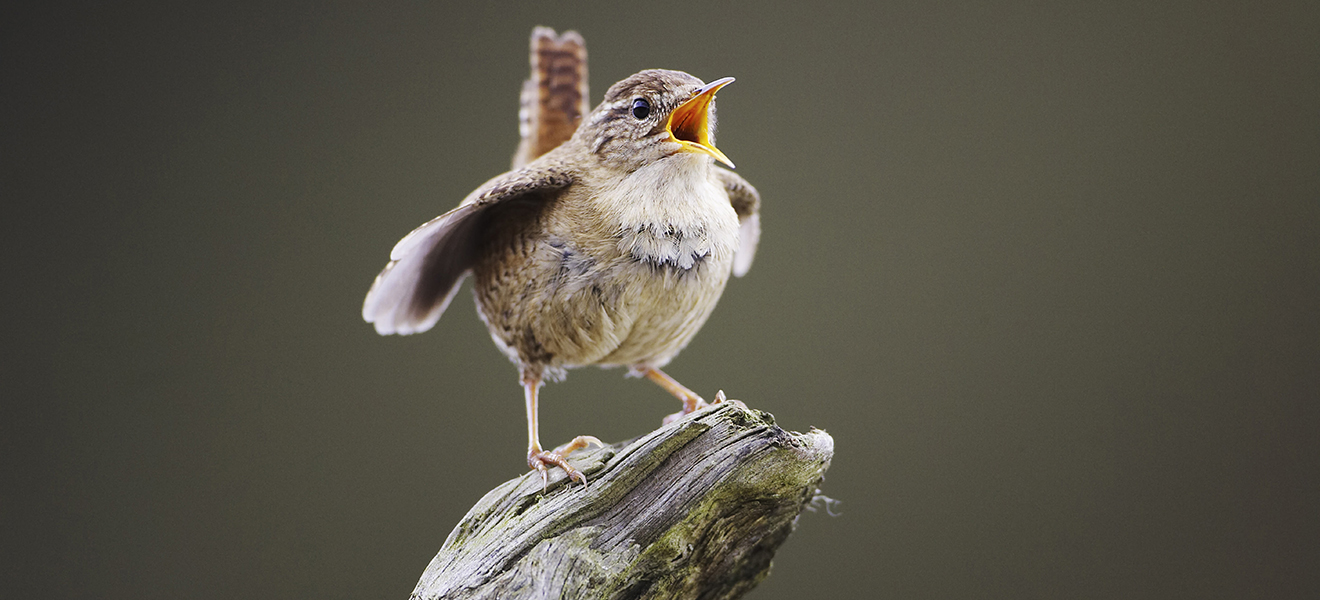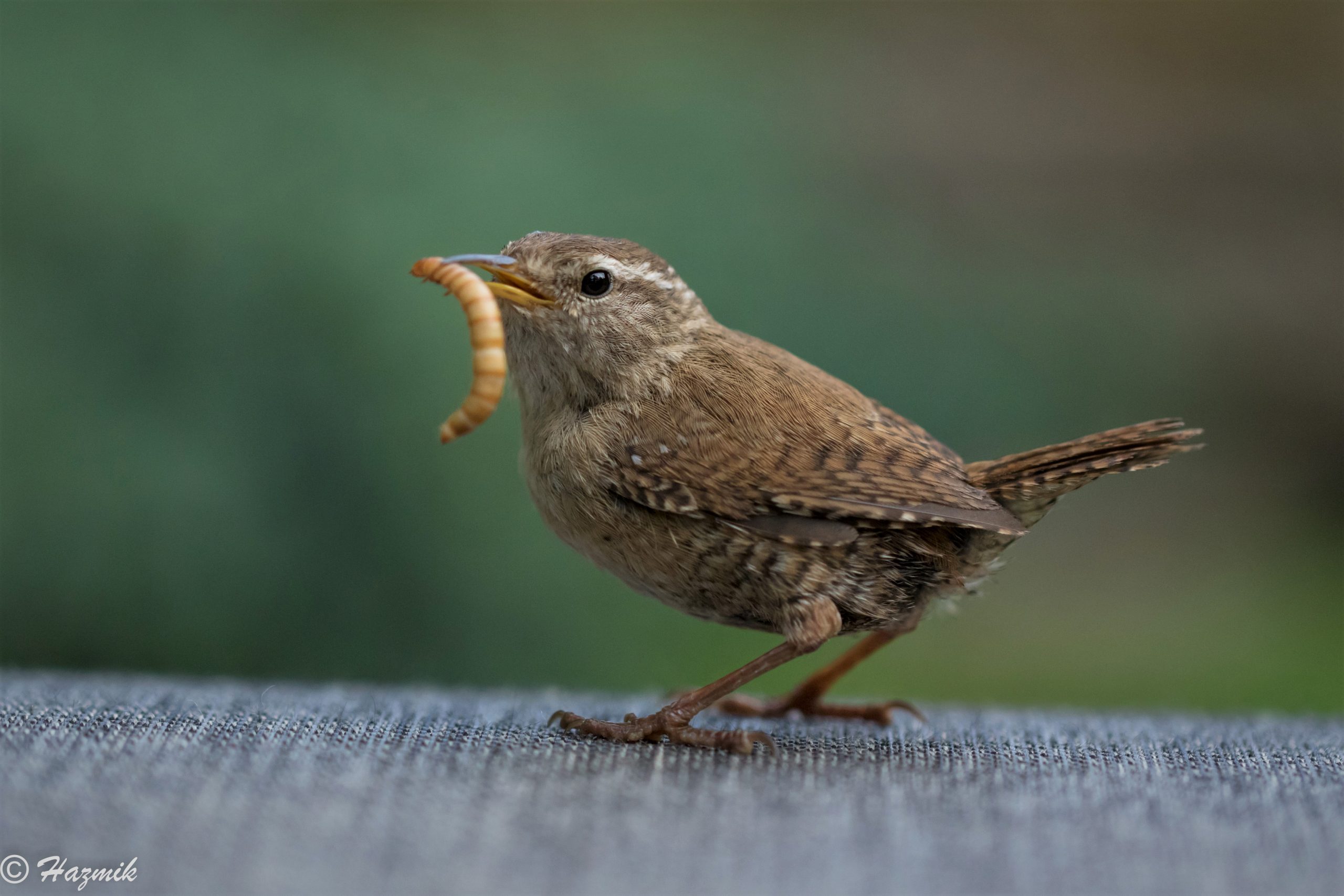
Tiny birds that are charming but elusive, there are 88 species of wren across the world! Chiefly wrens are mostly seen in the Americas and Europe as well as parts of Asia. Cute, characterful and surprisingly loud, wrens are much loved by twitchers. So, what do wrens eat?
Wrens eat small insects, spiders and sometimes tadpoles. They reach into the tight corners that bigger birds can’t reach! Rarely seen on a bird table or feeder, a wren feeds on the ground and preferably undercover. If you want to put food out for them, think mealworms, breadcrumbs and oatmeal plus grated cheese, spread under a bush or hedge where the wren will forage. Let’s look at the wren’s diet in more detail.
So, What Do Wrens Eat?
Insects – What Insects do Wrens Eat?
So, this tiny bird measuring no more than a few inches surely only eats the smallest of insects? You might be surprised! The wren eats a lot – it has to match its body weight and more to keep going – and has a varied taste in insects. Wrens hunt in crevices and cracks in walls and trees for the following:
- Beetles
- Bugs such as ants
- Grasshoppers and crickets
- Moths
- Flies
- Mealworms
- Caterpillars
- Ants and more.
The wren is not interested in the species of insect, it simply loves those that it can find in its territory. Watch a wren foraging and you’ll see it poking its tiny beak into even the most miniature of spaces to find its next meal.
The nutrients in insects are vital to the wren’s health, just as those that we take in as humans are vital to us. Insects are a great source of proteins, vitamins and other nutrients that are essential to the bird’s diet. Here are a few of the vitamins that a wren gets from the insects listed:
- Vitamin C
- Vitamin D
- B12 and B6
- Vitamins A, E and K.
Vitamin A, in particular, is a growth vitamin that ensures the wren develops as it should. There are also important minerals in the insects that help with the birds bone development and oxygen levels, including:
- Iron
- Zinc
- Selenium
- Potassium
- Copper
- Manganese
- Magnesium
In fact, you will find that these minerals are essential for the development of all animals, including humans. Let’s now have a look at spiders, which are another part of the wren’s diet.
Spiders – Do Wrens Eat Spiders?
Wrens will eat spiders, so why are spiders not included with insects? That’s because spiders are not insects, they are arachnids! The wren will search for spiders in the same place it searches for insects – those cracks in walls, in the ground, and in the bark of trees and bushes – and takes the smallest ones that we will barely see.
But there is a far more interesting reason why wrens – and other birds – eat spiders: they contain surprising amounts of taurine, even the tiniest ones! What is taurine? It’s an amino acid found in many living things, but in arachnids it appears to be present in a greater ration than, for example, in insects or caterpillars.
Taurine is, put simply, brain food for birds. It helps with their brain development, eyesight and overall intelligence. If you’re ever lucky enough top watch wrens or other small species feeding their young, you’ll see them feed great numbers of tiny spiders alongside insects, and it’s for the taurine content. How did the birds discover this? That remains unknown, but scientific research confirms this curious fact: wrens eat spiders for taurine!

When do Wrens Eat Tadpoles?
During the winter months birds of all species may find it harder to find wild food. This is the time when we can help them most, but we will come back to that later. We want to talk about wrens eating tadpoles which may seem an odd choice for a small bird of this type.
The wren usually turns to foraging at the edge of ponds and rivers in the spring. This is the season when insects are becoming more prevalent after the winter months. Indeed, during winter, you may see wrens more often than at other times of the year as they come out from their hiding places to forage in the snow and under it. Why do wrens eat tadpoles?
During the spring some of the food that wrens usually eat – spiders, insects and caterpillars, for example – are harder to find. Tadpoles, however, are plentiful in ponds, river and lakes as frogs breed at this time of year. The reason frogs release such great amounts of spawn – from which the tadpole develops – is simply because nature will take 90% away, and birds eating them is just one factor in this.
Tadpoles contain large amounts of magnesium, sodium and calcium which are essential minerals in animal growth. This is the primary reason for wrens eating tadpoles. In fact, this tiny bird may even be audacious enough to eat a small frog. Then there are the fish in the pond, so let’s talk about those!
Do Wrens Eat Fish?
They do eat fish, but not adult fish! While taking in some tadpoles a wren may also eat the small fry of many a variety of fish, as these also contain the nutrients that are helpful for growth and development. Fish are rich in vitamins D and B2 as well as calcium, iron, zinc and phosphorous, all of which play a part in a healthy life for a bird. So, now that we know what they eat in the natural world, what can you put out for a wren to help ensure it gets fed when insects are less plentiful?
Obviously, you can’t put spiders and insects out! Let’s look at what you can do to help these tiny birds.
What Should I Put Out for a Wren?
We know what a wren eats and where it likes to feed, and the latter is particularly important when putting food out for your wrens. Wrens will feed on the ground or close to it and like to do so undercover. They will only rarely visit a bird table or feeder.
If you want to make sure your wrens get their share of the food you put out, make sure you spread it under a bush where you have seen wrens foraging previously. Or close to a wall that has other cover. Anywhere you can find that is suitably covered will be ideal for a wren. What should you put out for a wren? The following are the most likely to be picked up by these tiny birds:
- Mealworm, available dried from pet stores.
- Breadcrumbs that have been shredded very small.
- Grated cheese.
Each of the above is suitable for the wren and will help ensure they are kept fed at all times. Before we sum up, here are a few of the most frequently asked questions about feeding wrens.

Frequently Asked Questions
Should I Put Food on the Bird Table for Wrens?
The short answer is no. Wrens will not visit a table or a hanging feeder as they like to feel undercover when feeding, perhaps under a bush or tree, or close to a wall with further cover available. Put food out for them where you see them foraging regularly or create cover for them by putting a few shrubs in pots together in a corner.
What Food Should I Put out for Wrens?
Wrens will take oatmeal, breadcrumbs, mealworm and even grated cheese if it is spread in the covered area you have created for them or are aware they use for foraging.
Should I Feed the Fledglings?
No, leave that to the parents, but do continue to put food out for the adult birds who will largely be collecting food for the young birds.
Summary
The charming wren, with its short and stubby body and erect tail, is a garden favourite and one of the best ways to watch it in its natural habitat is to spread the food we have listed above in appropriate places. Put food out away from where your other garden or yard birds feed to ensure the wrens get their share.